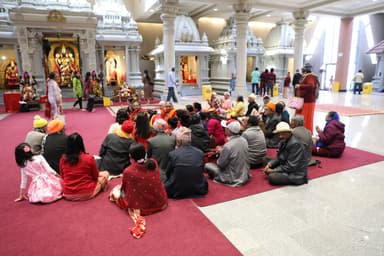




Roots Torn from Home
In the late 20th century, we—the Lhotshampa people—a Nepali-speaking minority—had lived peacefully in southern Bhutan for generations. But as the 1980s drew to a close, the Bhutanese government began enforcing strict citizenship laws and cultural policies. The goal: to consolidate a single national identity based on the Drukpa majority.
What followed was systemic marginalization. Our language, dress, and religious traditions were suppressed. Discrimination soon escalated into violence and mass expulsions. By the early 1990s, over 100,000 of us were forced to flee our homeland, most ending up in refugee camps in eastern Nepal—unwanted in both countries, and unsure of what the future held.
Years in Limbo
For nearly two decades, life in the camps was defined by uncertainty. We were not allowed to return to our homeland, nor granted citizenship in Nepal. We lived in limbo—unable to legally work, own property, or move freely. Families crowded into makeshift shelters. Children grew up knowing only the camp. Parents clung to memories of home while watching time and opportunity slip away.
Despite the hardship, our community endured. We built schools, shared stories, and held on to traditions—keeping our identity alive in the face of statelessness.
A New Chapter in America
Hope arrived in 2006, when the United States, in partnership with the UNHCR, agreed to resettle tens of thousands of us. Minnesota emerged as a destination state—known for its long-standing commitment to welcoming newcomers.
Local agencies like Lutheran Social Service and the Minnesota Council of Churches took the lead in helping our families begin anew. In cities like St. Paul, Roseville, and Little Canada, the first arrivals planted seeds for a community that would soon grow.
Building Lives in Minnesota
As more families arrived, our vibrant community took shape. Newcomers found support not only from resettlement professionals but also from earlier arrivals—friends, relatives, and neighbors—who helped them navigate unfamiliar systems with dignity.
Apartments became homes. First jobs led to long-term careers. Children enrolled in local schools, and elders began to feel a sense of safety they hadn't known in years. Slowly, the trauma of exile was replaced with the promise of belonging.
Minnesota became more than a place of resettlement. It became our home.
A Future Reimagined
Today, we are an integral part of Minnesota's cultural fabric. We are business owners, healthcare workers, students, teachers, and civic leaders. We celebrate Dashain and Tihar with as much pride as we cheer for the Vikings or ice skate in the winter.
Through organizations like BCOM, our community continues to support one another—preserving culture, promoting opportunity, and ensuring that no one walks the journey alone.
What began as a story of displacement has become a story of resilience, renewal, and community. From the Himalayas to the Great Lakes, our story in Minnesota is a powerful reminder: home is not just where you come from—it's where you build a future together.
Be Part of Our Story
Join us in supporting the Bhutanese community in Minnesota. Whether through volunteering, donating, or simply learning more about our culture, you can help write the next chapter of our story.